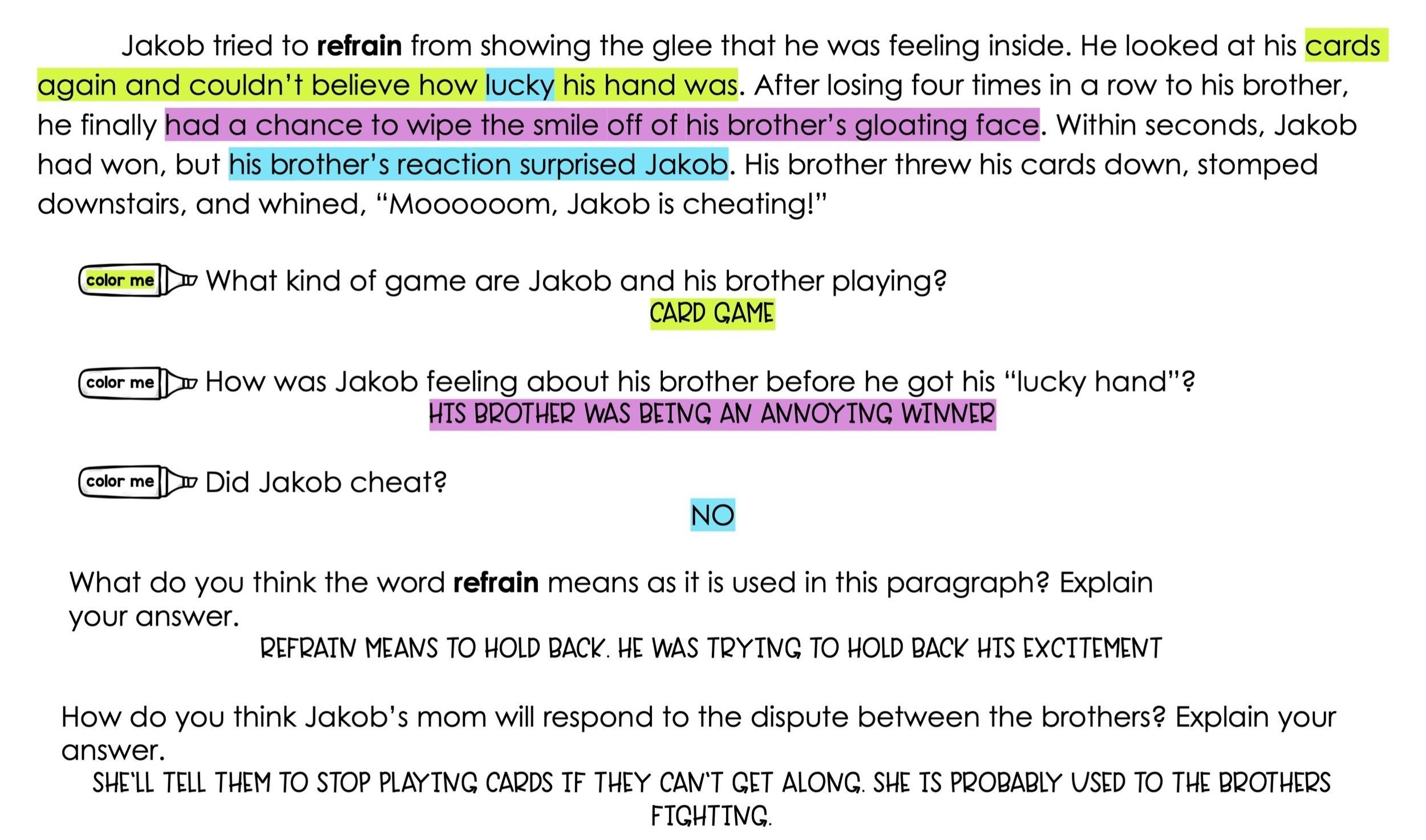Teaching Text Evidence Using Highlighting
I work on comprehension skills with a lot of my students, but I found myself asking the same question over and over.
“What am I teaching to help them generalize comprehension strategies into the classroom and into the real world?”
Sure, my students could easily comprehend a kindergarten passage, but what about a grade-level passage, a technical manual? I can’t teach them every vocabulary word, and I certainly can’t help them comprehend everything they read, so I needed to incorporate a strategy that they could use outside of the speech room.
I noticed that many of my students who genuinely didn’t understand a passage would just pick a word or phrase that seemed like it might answer a question. They didn’t refer to the text to figure out what it said and how the text answered a particular question. I wanted my students to think more critically about the questions that were being asked and to be more intentional with their answers to questions. I wanted them to find evidence within a text to answer a detail or inferential question. So, I began incorporating highlighting text evidence into my comprehension activities.
How does it work?
Students read a passage and are given related inferential or details questions. Instead of writing the answers to the questions, students highlight the answers in the passage.
I have found that there are a few great benefits to highlighting
Students don’t have to write out long answers which takes a tremendous load off of their shoulders.
Students have to refer back to the text to answer a question. This promotes re-reading (something my students are not likely to do on their own) and critical thinking about which line of the text answers the question.
Students are less likely to guess.
Students learn a strategy (referring back to a text to look for text evidence) that they can incorporate into the classroom!
With improved comprehension of a passage, students are better able to understand implied information and unknown vocabulary!
Now you know I wouldn’t be writing this if I didn’t have some awesome resources for you to implement this strategy into your speech room or classroom! Let’s take a look at my Highlighting resources!
Read & Highlight
These resources pack a double punch! Students read short passages and answer questions about the passages by highlighting the answers, AND all of the paragraphs are related to a post-high school industry or career field. Comprehension and transition goals? That’s what I call a win-win!
Read & Highlight#1 is a bit easier than Read & Highlight #2. Both were designed with older students in mind (~6th-12th grade) and can be used by speech therapists and special educators to work on finding text evidence and employment research!
If there is one thing that SLPs and Intervention Specialists know, it is that our students have a really hard time making inferences. In this easy-to- use activity, students highlight information in short fictional stories that supports an inferred statement.
My Highlight activities use 3 highlighters per passage, and let’s be honest, most teachers and SLPs are lucky to have three different color highlighters! Read & Color asks 6 questions per fictional story and assigns crayon colors to each question. Read & Color is extra special because along with the 6 comprehension questions and 4 vocabulary questions, each story has a separate worksheet with 6 “Think About It!” questions. These questions are critical reasoning questions with an emphasis on social inferences. These questions are great for students working on inferencing and for students working on social inferencing skills.
I hope you and your students enjoy implementing these fun (and colorful!) activities into your sessions.
Check out my store Kelly Conover on TpT for all of the language activities you could ever need for your older students!










